Addressing Climate Change
Promoting Decarbonization with Products and Solutions
Reducing Energy Consumption by Helping Customers Transform Their Processes
Textile Printer Reducing Electricity Usage through On-demand Production
The inkjet textile printer does not require the plate making and colored size mixing that is needed with conventional screen-printing. It also contributes to the reduction of energy usage, resources usage, and waste, since it enables on-demand production that uses only the amount of ink and material needed. It reduces environmental impact significantly, with a 57% reduction in electricity consumption compared to conventional screen-printing. In addition, it also contributes to energy savings for operations such as air conditioning and lighting by increasing customers’ production efficiency.
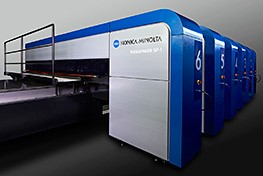
Inkjet textile printer, Nassenger SP-1
In-Line Pretreatment Ink for Reactive Dyes Shortens Inkjet Printing Process and Reduces Energy Usage
Pretreatment is necessary to coat the fabric with a special chemical to prevent reactive dye ink from bleeding into the fabric fibers, to ensure bright and vivid colors, and to make the colors resistant to washing. The chemicals used must be disposed of properly, and the associated equipment and costs are a burden on the textile industry. By filling inkjet textile printers with the in-line pretreatment ink "O'ROBE," it is possible to accurately apply the necessary amount of pretreatment ink to the specific areas of the fabric to be dyed, simultaneously with the reactive dye ink. This eliminates the need for the post-coating drying process that was required in conventional pretreatment, significantly reducing the use of energy such as electricity and gas. Additionally, the amount of pretreatment chemicals used is significantly reduced, which greatly contributes to lowering the environmental impact.
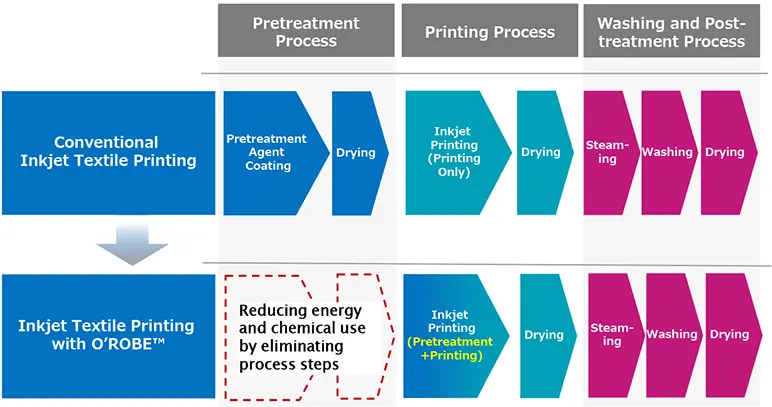
Changes in the Production Process Using the In-line Pretreatment Ink "O'ROBE"
UV Inkjet Digital Printing Machine That Reduces Power Consumption by Realizing Automatic Duplex Printing without Drying Time
The AccurioJet 30000 UV inkjet digital printer employs Konica Minolta’s unique Dot Freeze Technology to enable automatic duplex printing even on various media, including plastics, which was difficult with previous inkjet printers, thereby reducing power consumption. Unlike general offset printers, a digital printer does not require the creation of a printing plate, which saves printing time. The adoption of Dot Freeze Technology improves color reproducibility and stability, eliminating the need for color matching between multiple devices even when used simultaneously, and significantly reducing printing preparation time. The Japan Federation of Printing Industries recognized the Company’s environmentally conscious manufacturing with a three-star rating in its green printing certification system.
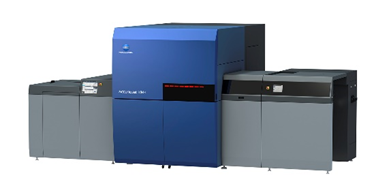
UV inkjet digital printer, AccurioJet 30000
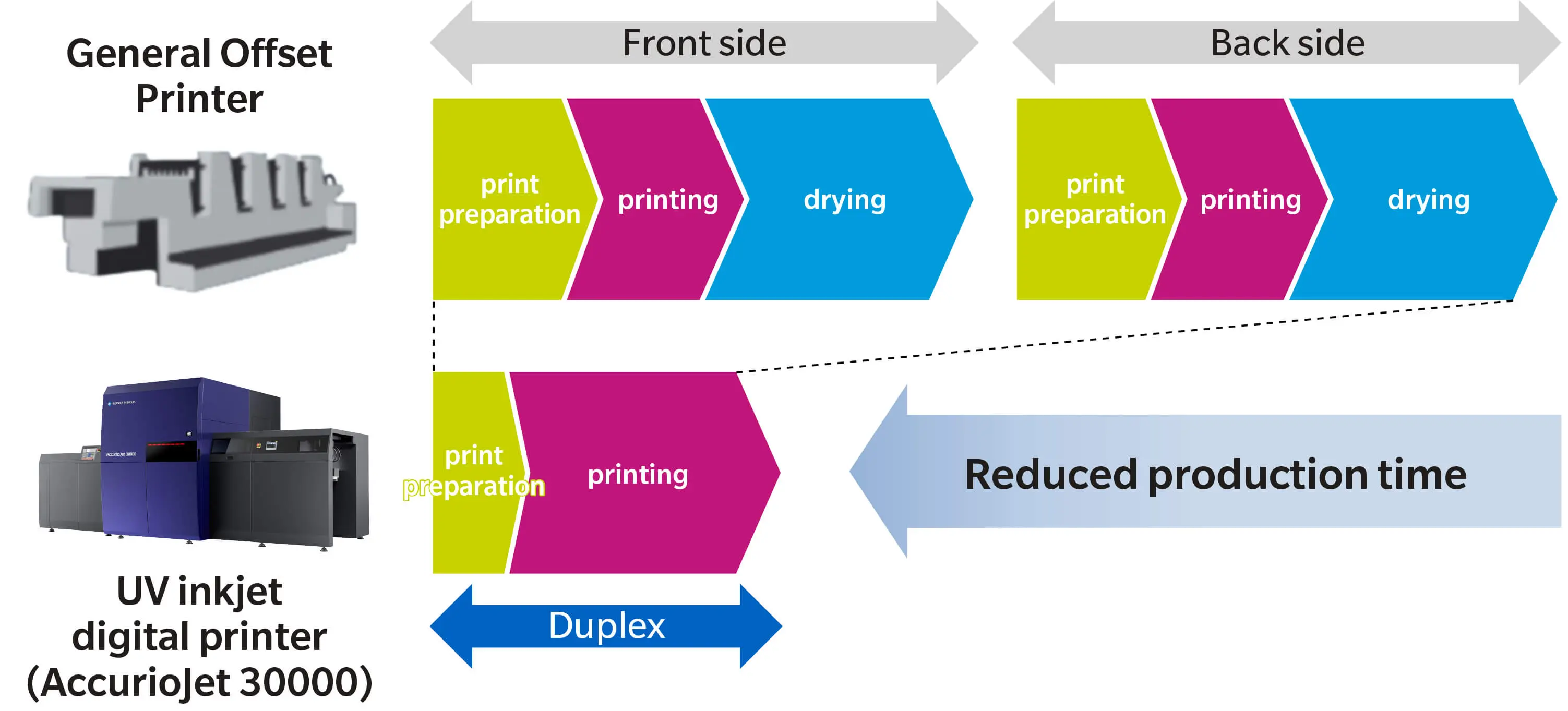
Comparison of production time between an offset printer and the AccurioJet Series UV inkjet digital printer
Contributing to Energy Conservation in the Label Printing Process
Konica Minolta's label printers offer a printing process that employs electrophotographic technology, providing high-definition and stable print quality comparable to offset printing.
In traditional offset printing, each color of UV ink often requires a dedicated plate and a high-power consumption UV lamp to cure the UV ink, which was standard practice. Konica Minolta employs electrophotographic technology to print color images in a single pass, making it unnecessary to cure and color match each color of UV ink.
At the same time, since no plates are required, it helps reduce the energy used in customers’ manufacturing processes and contributes to effective resource use.
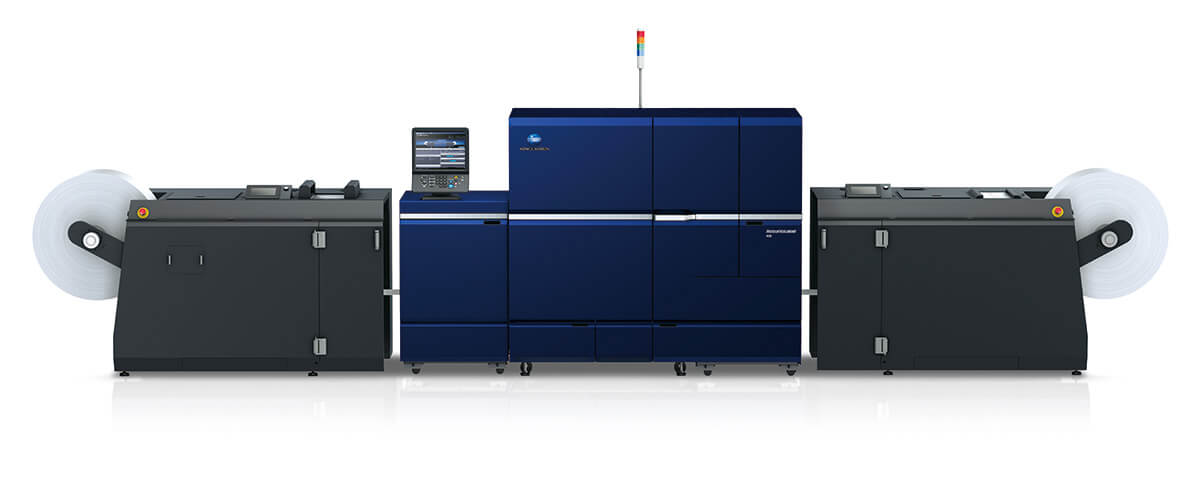
Label Printer
AccurioLabel 400
Using Imaging Technology to Prevent Leaks of GHGs
Konica Minolta’s "Gas Monitoring Solution" applies its core technologies of lens design and image processing to successfully visualize the presence and quantity of hydrocarbon gas with a high global warming potential. The system can quickly and easily identify leak locations and measure leak quantities, even in environments where it is difficult to use conventional gas detectors, such as in strong winds, at heights, or in high-temperature facilities.
The Company provides its "Gas Monitoring Solution" to support ongoing global initiatives by oil and gas operators to reduce methane emissions, thereby helping to curb the climate impact of high-GWP gas leaks.
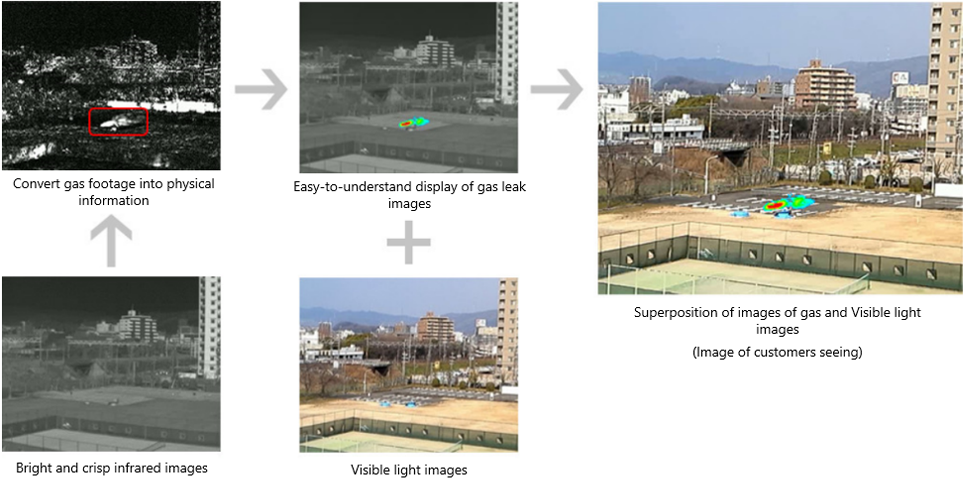
Nine Imaging Modes Selectable According to Weather and Surrounding Conditions
Energy Conservation in MFPs and Digital Printers
Reduction of Power Consumption During Product Use
Multifunction printers require heating to fix toner to paper, and this process accounts for over 60% of their total power consumption. Konica Minolta independently developed "Simitri V toner," which fixes at a lower temperature, succeeding in lowering the fixing temperature by approximately 15°C compared to previous models. Additionally, by developing a system to efficiently fix the Simitri V toner for the bizhub C360i series, released in 2019, the Company reduced the standard weekly power consumption (TEC value) by approximately 20% to 26% compared to the previous model. The successor bizhub C361i series, released in 2024, also achieves a low TEC value equal to or lower than that of its predecessor.
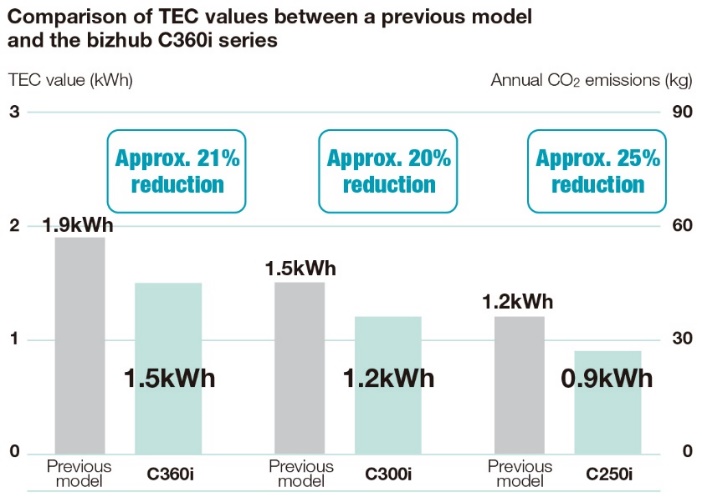
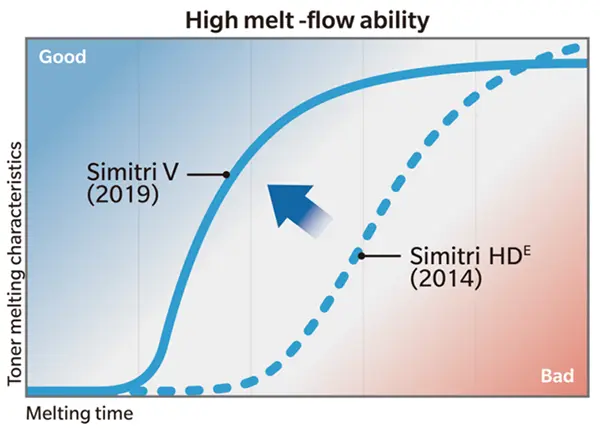
Comparison of Melting Characteristics between Simitri V Toner and Conventional Toner


